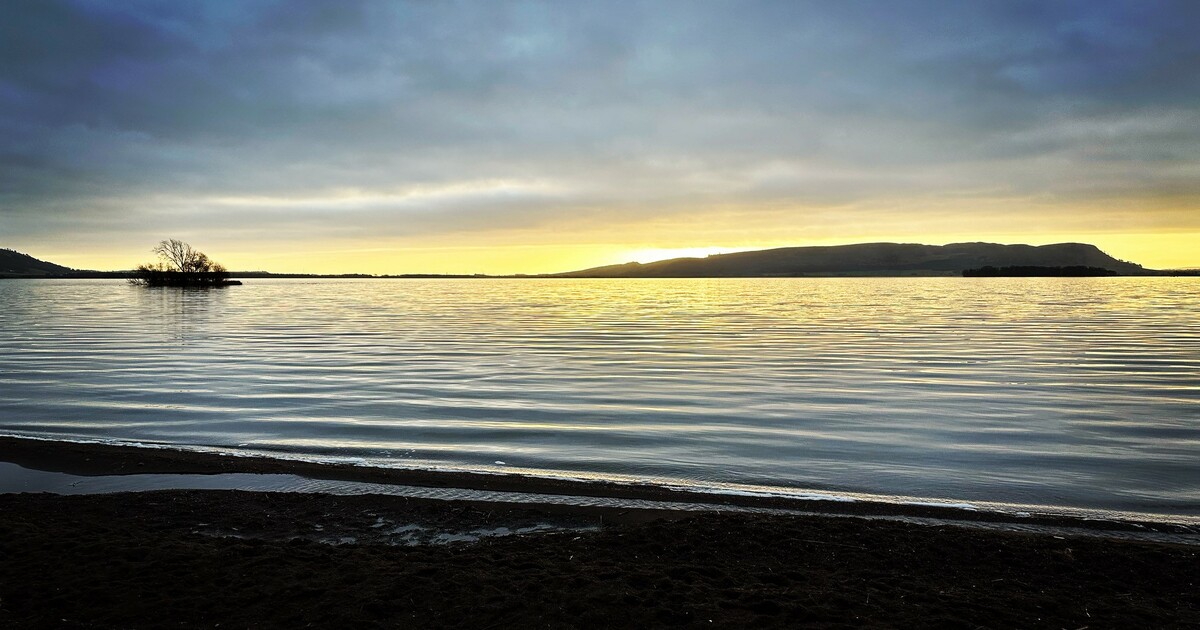MSP floats plans for Loch Leven to become protected wild swimming hotspot

One of Scotland’s most stunning freshwater lochs could become a protected wild swimming hotspot if a bid by the Scottish Greens to see it given designated bathing water status gets the go-ahead.
The picturesque Loch Leven in Perth and Kinross, a favourite spot for Loony Dookers, is probably most famous for being the site of Mary Queen of Scots’ last prison escape, inspiring an eponymous film starring Margot Robbie.
It is also home to NatureScot’s National Nature Reserve, an accessible 13-mile heritage trail, and important RSPB reserve which sees upwards of 20,000 visiting pink footed Geese swelling its bird life to around 36,000 every year.
But it has been plagued by rising levels of toxic blue-green algae blooms across parts of its 3,600 acres of water, leading to it being closed off during peak season when visitors, bathers and dog walkers are out in force.
Toxic blue-green algae bloom - actually a bacteria called cyanobacteria - at its worst can kill wild animals, livestock and domestic pets and cause distressful problems for humans.
Causes being studied include treated sewage from two waste-water treatment plants and inundated sewer systems, run off from local agriculture and farm fields, and naturally occurring phosphorus exacerbated by rising temperatures,
Now Mark Ruskell, MSP for Mid Scotland and Fife (Region), is calling for Scotland’s largest lowland loch to be granted designated bathing status to allow action to be taken to tackle suspected causes of the pollution causing the bloom and other water quality issues.
That, he says, could transform it into a hotspot for wild swimming, paddle sports and mental and physical well-being activities, all within easy reach of surrounding communities and beyond.
Mark Ruskell MSP said:
“Loch Leven is one of Scotland’s natural treasures and a truly wonderful example of environmental restoration work, after it was brought back to health after issues with pollution back in the early 1990s.
“Its importance and popularity really came into its own during the global pandemic as people flocked to its shores to enjoy its open spaces, spend time in the water and among the trees and hills that flank it.
“Ever since its popularity has grown, but all too often we are seeing the warning signs going up warning of this horrible and potentially fatal bloom, and all the indicators are its being allowed to get worse.
“Instead of people being able to make the most of the waters as a wild swimming hotspot or being able to use paddle boards and canoes respectfully, mindful of its role as a bird and nature reserve, we all too often see the warning sites going up to stay out.
"The deadline for applying to SEPA for bathing water status is March, and we need to show exactly how well loved and used Loch Leven is.
"I'd love to hear from everyone who swims at and uses Loch Leven to let me know exactly which parts of the shoreline we should look to have as designated spots.
“By cleaning up the waters, by ensuring even greater monitoring and remedial work, then it would transform the health of the loch allowing locals and visitors alike to benefit from this amazing body of water within easy reach of their homes.
“It cannot be right that we stand by and do nothing when all the evidence is clear that our mental and physical health benefits from being engaged with nature.
“There are also potential good economic knock on effects for some local businesses, nature charities and the wider area as whole, in the same way we see places like the Cairngorms and Loch Lomond benefit.
“Loch Leven, with all its history of Mary Queen of Scots, the winter curling Bonspiels and its key role in protecting our nature and biodiversity, deserves to be afforded all the protection available to us, and I hope people will work with me in achieving this.”
At its longest point Loch Leven stretches for 3.7miles and after being partially drained from a larger state when the RIver Leven was canalised, boasts seven islands including St Serf's Inch where Mary, Queen of Scots, was held in 1567.
Lochleven Castle, from where she escaped, has been inaccessible since the pandemic and according to Historic Scotland will remain closed awaiting repairs to make it safe, further adding to the need to help support local tourism.
Otters, red squirrels, foxes, bats and plant species on the IUCN endangered red list also reside around the loch, popular among anglers on boat tips for brown trout and perch.
It is already a site of Special Scientific Interest, a Special Protection Area and RAMSAR site, further strengthening its claim to designated bathing water status.